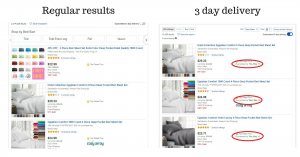
Instagram began in October 2010. Feel old? On April 12th, 2012, Mark Zuckerburg purchased Instagram for one billion dollars.
Why?
Because Instagram is special than Twitter and Facebook.
How?
Nate Elliott at Forrester claimed that Instagram blows them away when it came to delivering engagement.
Just how much?
120x more engagement, per follower, than Twitter. 58x more engagement per follower than Facebook.
Can’t really blame Zuckerburg for buying out the competition, can you? Since you probably don’t have that kind of money lying around, buying out your competition on Instagram isn’t an option.
Read below for several options to put you leagues ahead of other start-up brands in your niche.
1. Plan
Plan. Plan, plan, plan. Just like you drew out and revised thousands of ideas when you began your initial business. Why are you starting an Instagram business? What are you looking for? What customers do you need? What problems are you solving? What do you actually do?
Then, once your planning is done, for now. It’s never really done.
Or is it?
You should download the Instagram app to your phone. Sadly, Instagram isn’t for desktop.
Once you’re “in”, start off by doing some research. Use Instagram yourself for a day or two, before you use it for your brand. Check out the best businesses on Instagram, and other brands in your industry—including your competitors—both for inspiration and competitive intelligence.
After that, you want to make goals and define your reason for being here. Whether that includes increasing product sales, increasing website traffic, or brand awareness.
Draw out (in crayon if you have to) a picture of the bulls-eye you’re going to be aiming at.
2. Craft A Mission Statement
Once your goals are concrete, craft a mission statement. These handy little buggers act as guiding principles behind your business on Instagram. (It’ll also do the double-duty of keeping you from treating your Instagram followers like your Twitter/FB followers.)
Crafting a mission statement for business is crucial. Since this site is primarily visual, your mission should reflect that.
3. Dive In The Water
It’s easy enough to plan and craft statements until the cows come home. What separates wannabes from doers is this: taking action to make things happen.
Once you’re ready to take the dive, create a posting schedule (just like you do with email autoresponder series). You don’t need to be told not to bombard your followers with posts, that’s just annoying, but you do need to be reminded to stick to that schedule.
If you have a powerful team set to take care of your Instagram page, it’s smart to create a calendar: who posts what and when. How many times a day do you want to post? What time of the day?
Late June 2016, it was reported that Instagram had over 500 million users. In 2014, 99%+ of people earning $ 75,000+ a year use internet on daily basis. Figure out these age demographics: and go after them. Your bank account will thank you, and your competition will hate you.
But no matter when you want to post, just remember this: it’s time to beat that barely-breathing horse and say, once again, content is king.
4. Be Relatable
The entire point behind Instagram is to connect people together.
Don’t sully Instagram’s purpose with corporate speak. You’re a business, yes, but your customers aren’t. I’ll bet eight to five that your customers trust you because you treat them like people – instead of a statistic.
Let your Instagram page reflect that humanity. Post relevant “behind the scenes” pictures. One of my favourite Instagrammers to follow is Hugh Jackman – he often posts on work out day (oo la la!) and shares pics of where he is. It’s wonderful to see such an icon being so… human.
Listen, this is important…
Instagram is visual.
So, to increase brand awareness (just as you do on Twitter), pick one filter (or a couple) and maintain that through each and every photo and video. This gives you style.
Another thing to seem relatable, is follow people in your space/niche. Once they see that you’re a like-minded individual, they’ll probably follow you back. Perhaps (if you’re savvy enough to create a one-on-one) even hashtag you to their followers – more people getting your brand out there!
(It works both ways, too. Spread a nice word about them to show your followers what you like.)
It does not take talent to appear relatable to your audience – all you have to do is be a part of them. Go to the mall one shady afternoon, pick a nice spot to sit… And people watch. Just people watch. That’s your audience.
And I’ll bet five to one that your audience loves Instagram Stories.
5. Market
You know first-hand that people won’t come just because you’re there. Marketing is Business 101. Many companies have entire teams dedicated to marketing their Instagram page. Do you want to drive sales or increase traffic?
Whatever your endgame plan is, you need to invest heavily in marketing both on and off Instagram.
Whether your initial plan is to increase sales through photos, in those photos, be sure to…
- Design images that capture attention
- Focus on lighting (make Stanley Kubrick proud)
- And tell a story with the caption. Captions are your one chance to HOOK people in, and keep them there.
Once you have a kickass photo, a superb caption, your work isn’t going to get any views at all without relevant hashtags. (Stick to three or five hashtags at a time.)
Hashtags, in case you live in a rock, hashtags (#) are a metadata tag that lets people find themes or topics. #something #like #this. You remember all those annoying kids who actually walked around, saying “Hashtag delicious” out loud? Yup: it originated on the internet. Let’s keep going with what else you should do:
- Add your site in the bio (because why not, right)
- Design photos/videos with CTAs in mind (shame on you if you don’t)
Instagram uses video, and it’s about time too. Now, with this ability to tell stories thanks to video (which converts 144% more than images) you can sell anything and market to everyone if you know how.
You don’t have to sell all the time, either. You can let customers in on what goes on “behind the scene” and involve them on the process you go through to make content for them. (Here’s a cool idea: gather a list of names of your followers and make a “Thank You” video for them, reading off their names.)
Just remember: people are people. They are not numbers, statistics, or a piece of flesh for you to hock products to. Be human to attract humans. That’s why those motivational videos you see all the time on YouTube are so big: they deal with what’s happening, in the world, right now.
Digital & Social Articles on Business 2 Community(28)
Report Post





